Submitted by WA Contents
Patio Estudio designs multipurpose room with mud walls in circular geometry in Córdoba
Argentina Architecture News - Dec 02, 2021 - 09:51 4399 views

Argentinean architecture office Patio Estudio has designed a multipurpose room located in the back side of a company that provides integral services in Parque Horizonte neighborhood, Córdoba, Argentina.
Named Pulmón de Iscot, the 154-square-metre room is comprised of circular walls made of mud walls extracted from the site and recycled wood to build the structure.

Designed for a company playing an important role in the recycling of waste and remnants of the main automotive companies in the country, the company has a strong relationship with sustainability and environmental care.
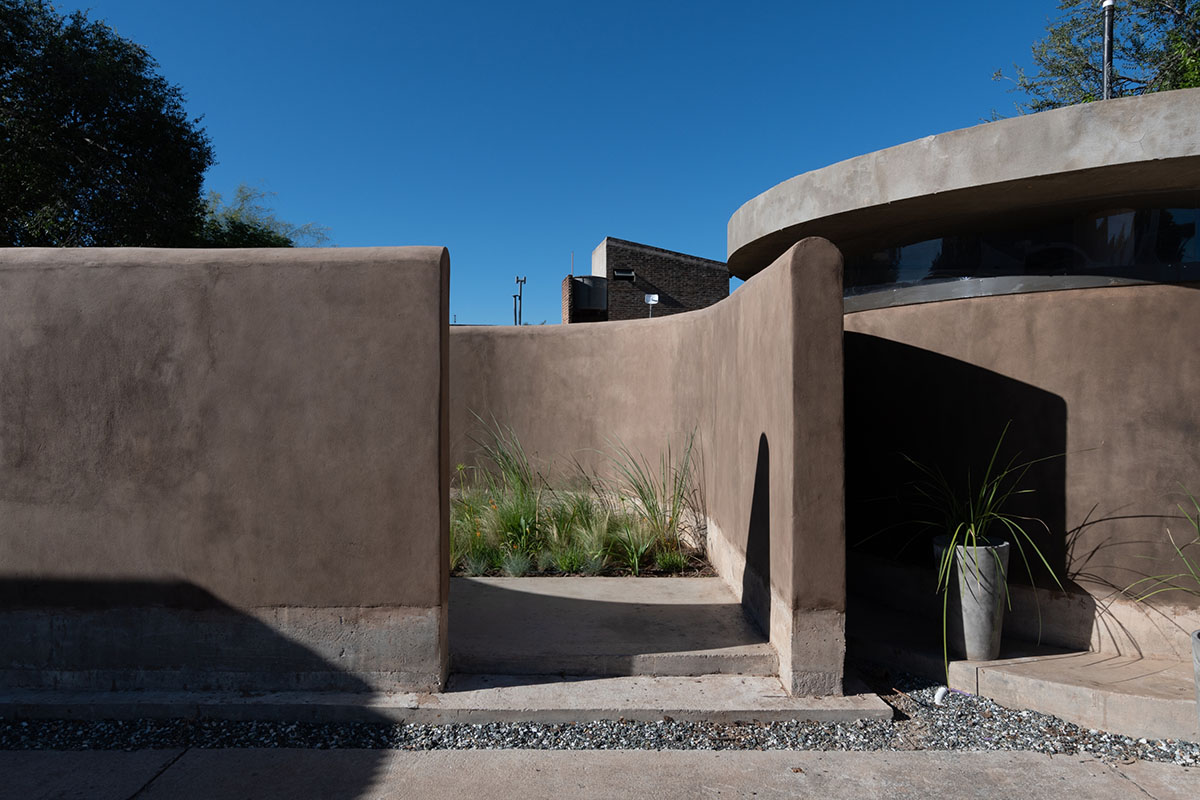
Faced with the opportunity to recover an abandoned space, the project arose from the need for a place where the work team can eat, rest and carry out activities like training or business talks.
Under this premise, a space was designed to be physically, visually and sensorially abstracted from their daily work environment.
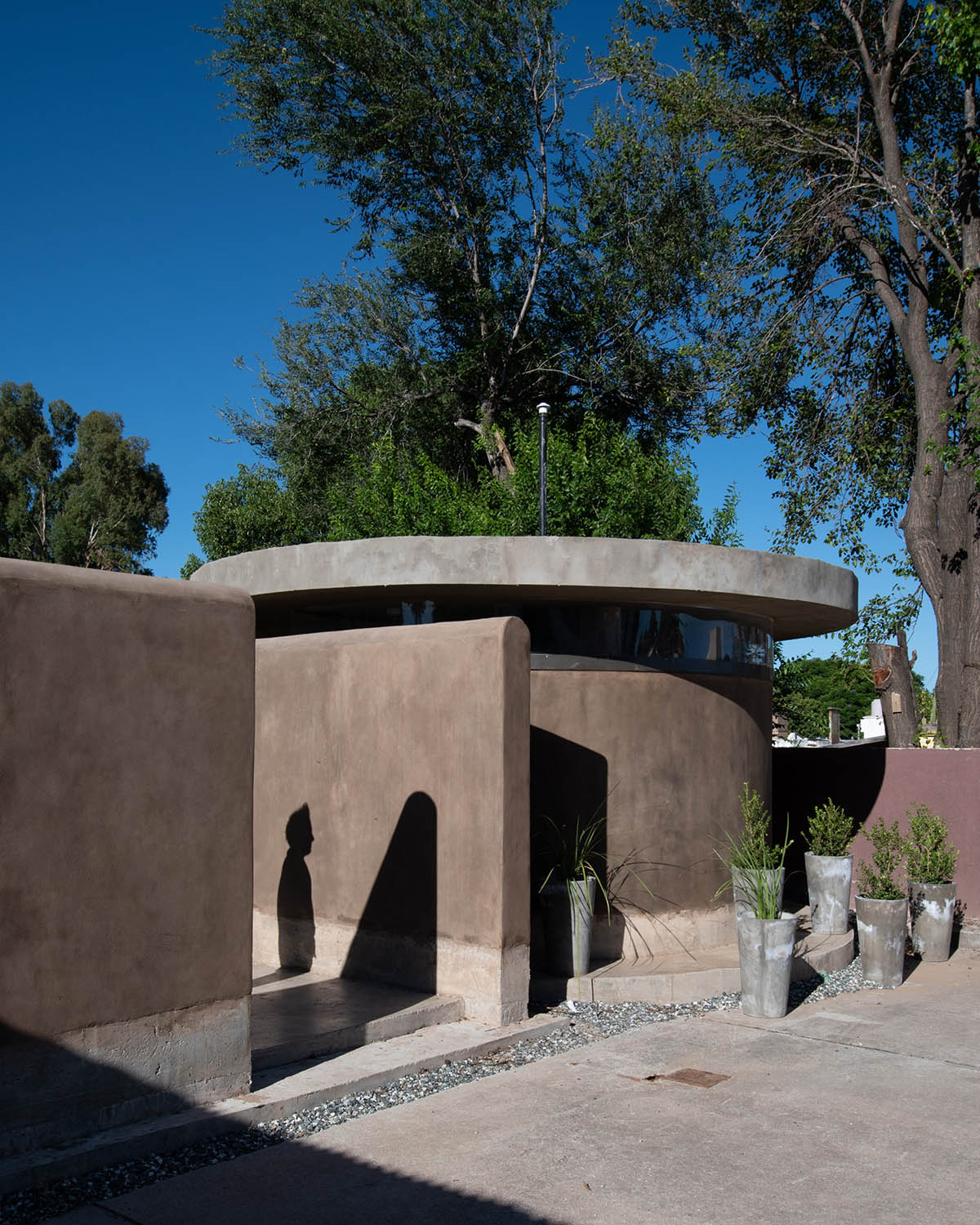
The entrance functions as a filter between the company and the site, connecting to a covered place with kitchen and living room on the left, an open barbecue area and a restroom on the right. Inside the space there is also a vegetable garden and a composting area for food production and organic waste treatment.
The space has the character of a lung, not only because of the earth that breathes, but also because of the morphology and layout of its mud walls that embrace the space, It seeks for the staff to breathe, rest and feel contained in a natural environment. The project has the uses separated by the courtyard, which allows flexible stages in its construction.

The studio used sustainable materials that were available within the company. The earth was extracted from the construction site. The structure of the walls is recycled wood extracted from auto parts packaging recuperated by the same company.

Both materials make up the walls with a hybrid version of woodframe and “quincha” (a wood structure filled with mud and straw that provides lightness and thermal insulation) and are plastered in mud with natural additives such as water from penca, guano and linseed oil.

Earth is the most abundant natural building material in most regions of the world. In industrialized countries, the excessive exploitation of natural resources together with the intensive manufacture of energy and chemical products, generate a great environmental pollution, damaging not only our planet, but also the health of those who inhabit it.
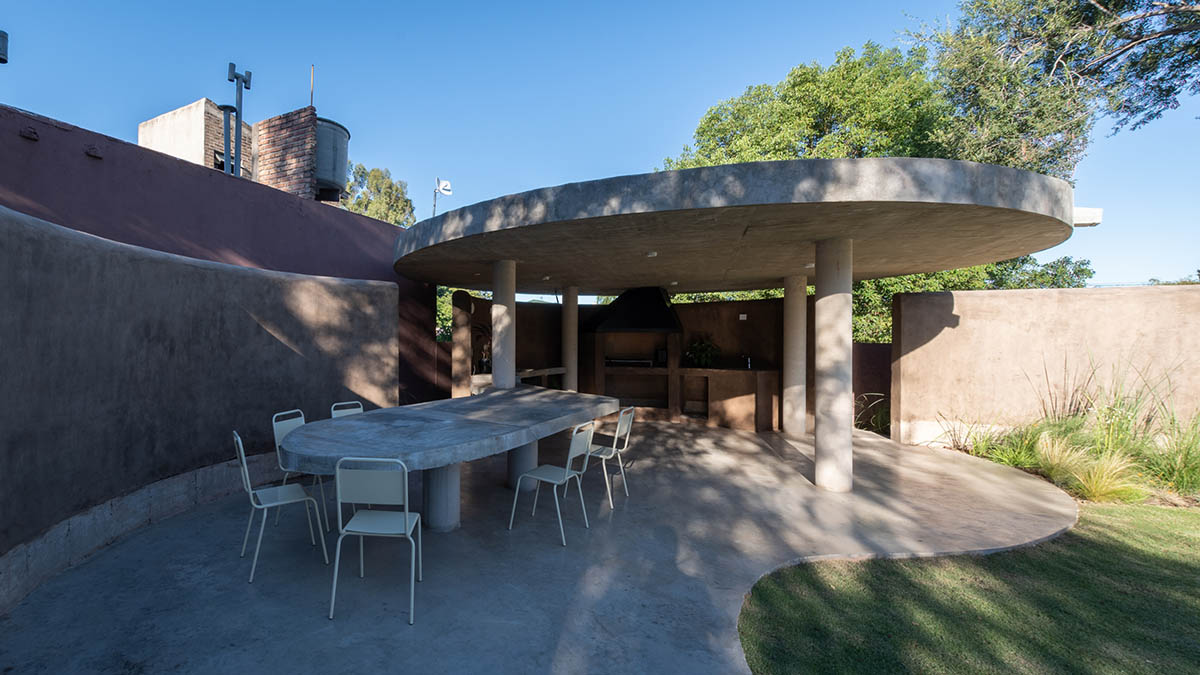
Among the qualities that mud has, we can find humidity control and heat storage that achieves thermal comfort.
It is a super-insulating material that saves energy in air conditioning, does not require transportation, reduces environmental pollution and is reusable. It also saves on construction costs (25 per cent approximately) and encourages self-construction.
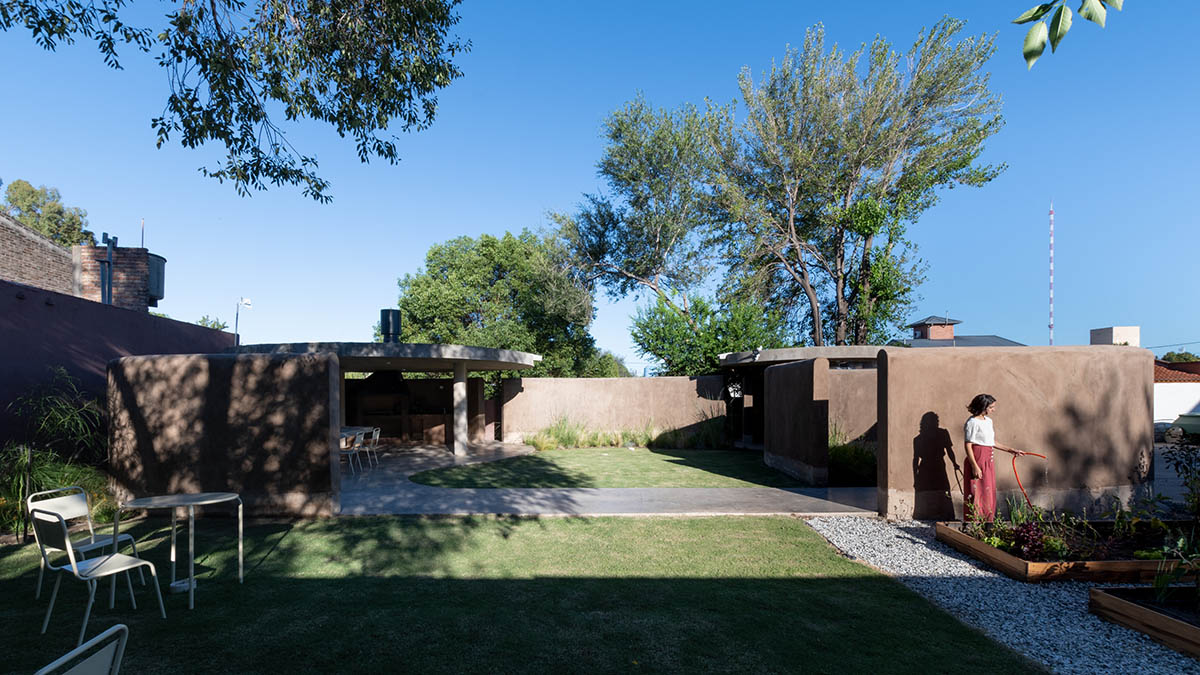




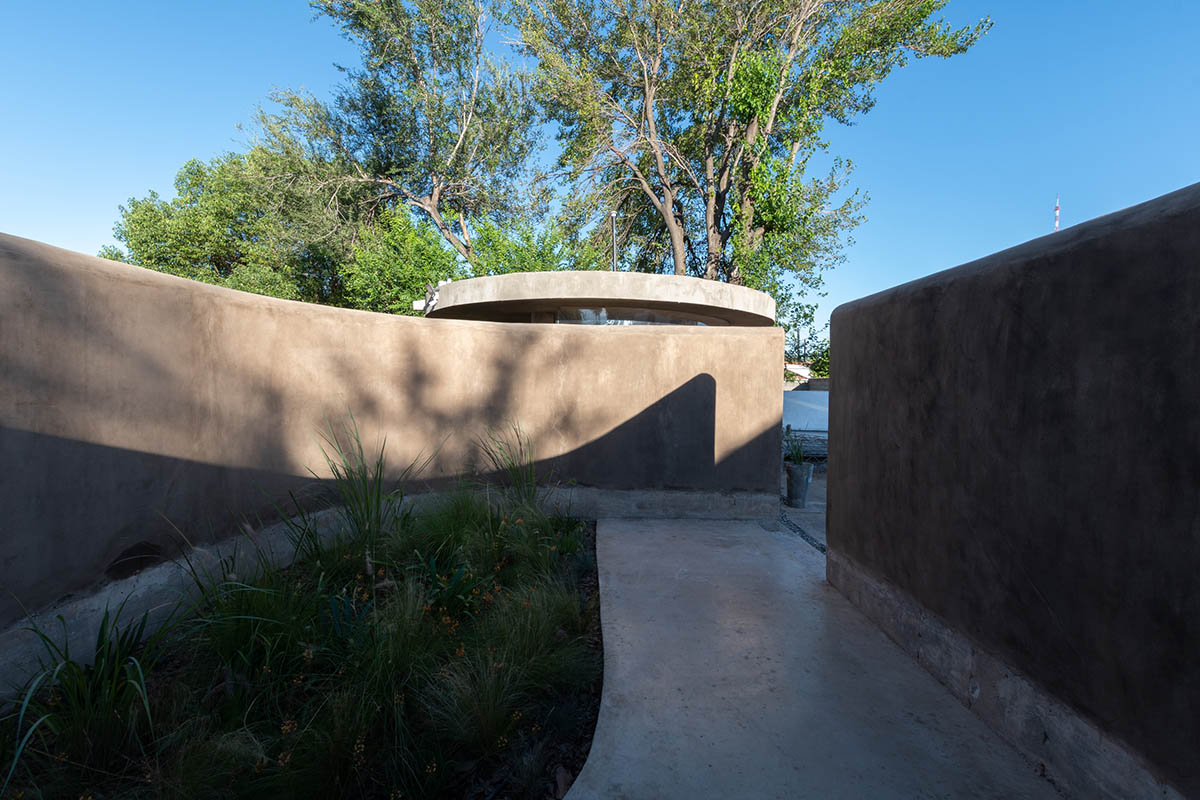
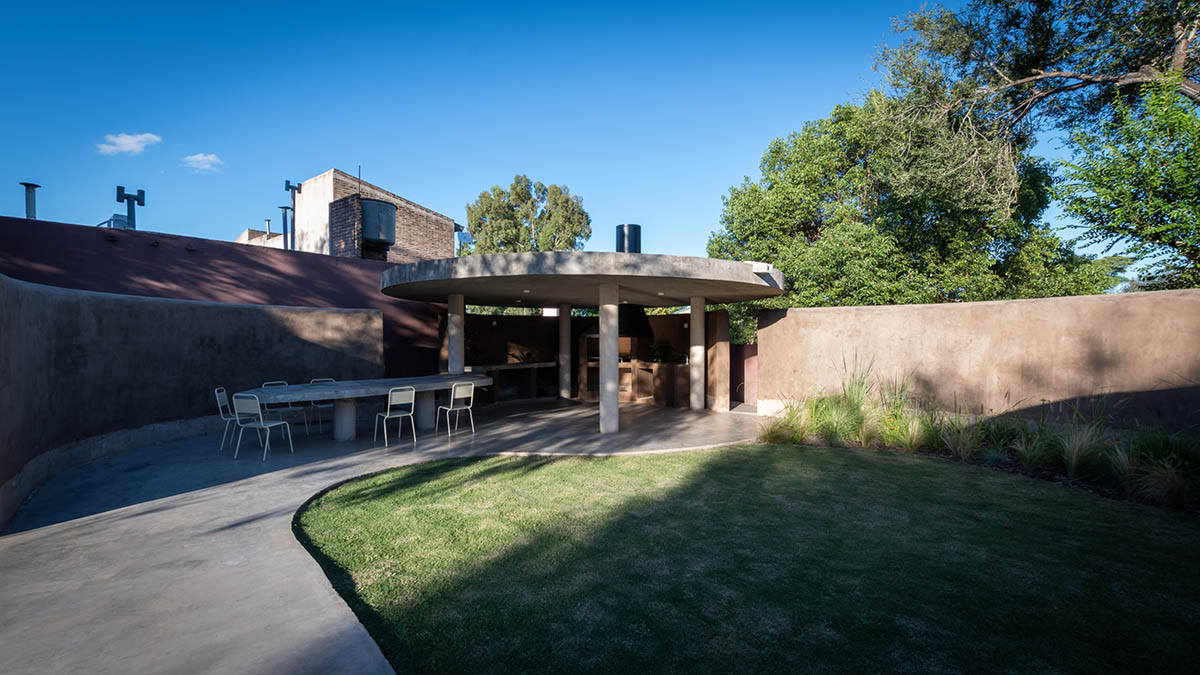

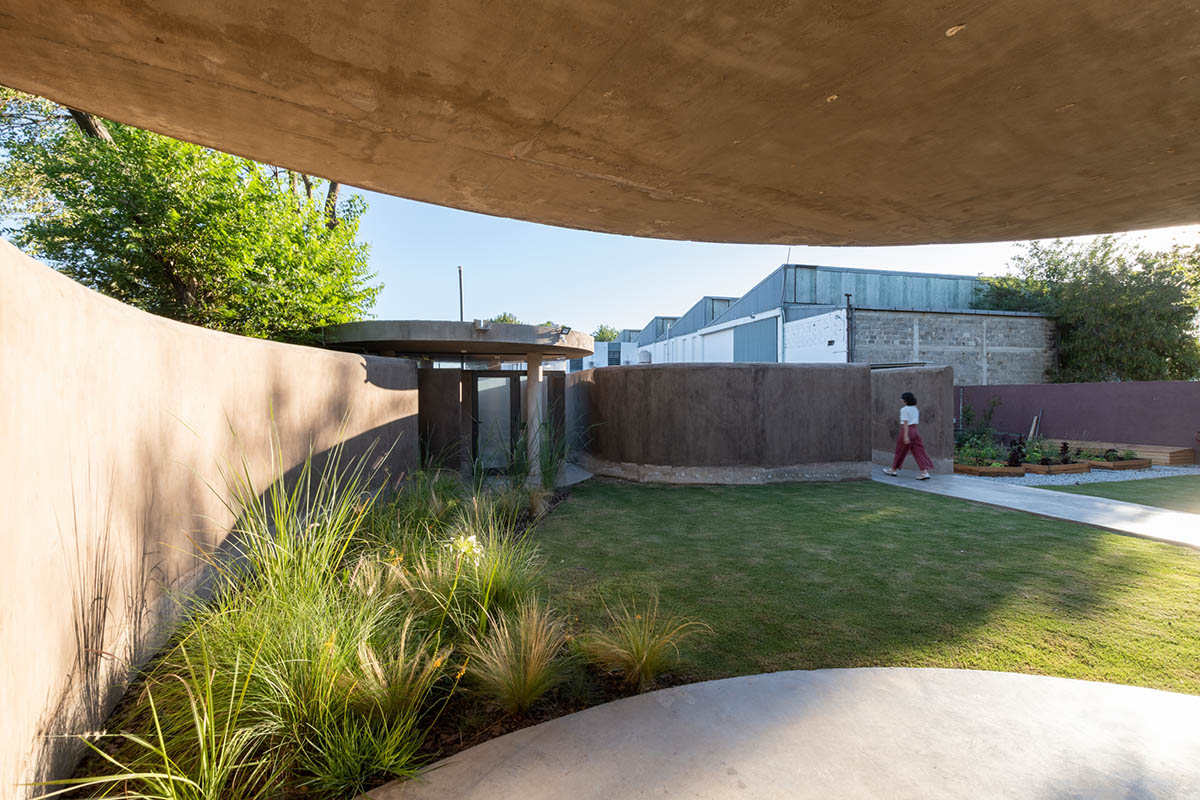

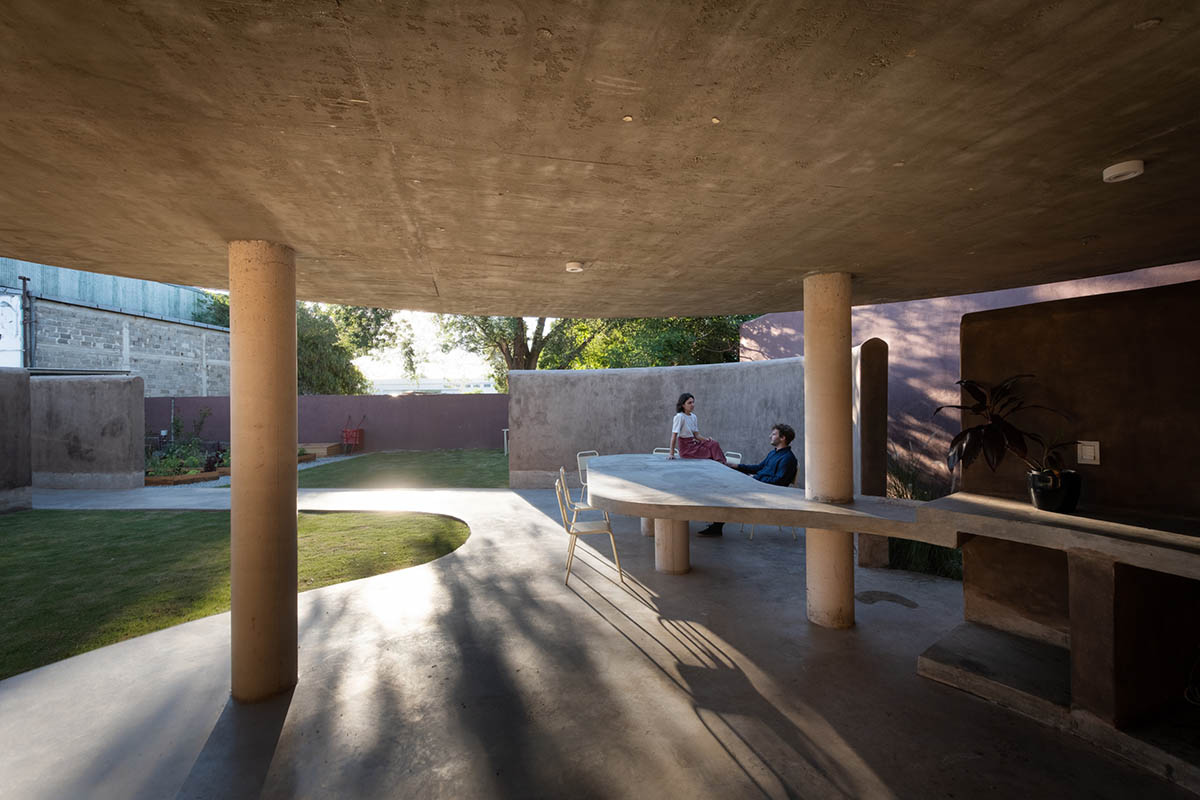


Floor plan

Elevation

Elevation
Project facts
Project Name: Iscot's Lung
Architecture Office: Patio Estudio
Construction completion year: 2020
Built area: 154m2
Location: Parque Horizonte neighborhood, Córdoba, Argentina
Architects in Charge: Arch. Federico Romano Lorenzi / Ing. Marcos Gatsch / Ing. Mariano Domínguez
Design Team: Arch. Federico Romano Lorenzi
Clients: Iscot Services S.A.
Engineering: Ing. Carlos Pudo
Landscaping: Dis. Marcela becerra
Collaborators: Arq. Catalina Gatsch
All images © Gonzalo Viramonte
All drawings © Patio Estudio
> via Patio Estudio
